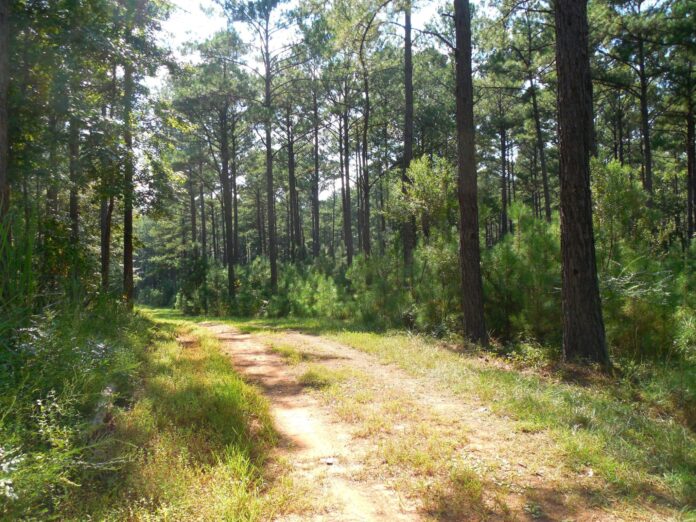AUBURN UNIVERSITY, Ala. – One of the world’s largest sources of carbon can likely be found in your backyard. In fact, trees are some of most efficient carbon-capturing organisms in the world. Alabama’s forests work around the clock moving this element and making the world a better, healthier place to live.
Forest Carbon
Trees store carbon as they grow and produce wood. Just like all plants, trees use photosynthesis to remove carbon dioxide (CO2) from the air and produce oxygen (O2). The needles and leaves are the solar collectors that convert light, water and CO2 to oxygen and sugars. Photosynthesis drives tree growth and carbon storage into the tips of stems and all the way down to the roots.
“It is hard to overstate just how efficient our forests are at removing carbon dioxide from the atmosphere,” said Alabama Cooperative Extension System Forestry, Wildlife and Natural Resources Specialist Adam Maggard.
Any leaves, limbs or needles that fall from a tree also contain carbon. Eventually these items will decompose with the help of soil microbes and return carbon into the soil. This is a small part of the larger-in-scale carbon cycle.
A unique feature of forestland carbon is that the element is stored in the tree throughout the entirety of its life, even after dying. For example, most wood furniture and products still have the same carbon from the original tree at harvest. This carbon will not return to the atmosphere until the wood rots or burns.
Clearing the Air
In some homes, consumers like to place air purifiers in bedrooms and living areas. These machines intake air and output a healthier, pure version that is ideally better to breathe; however, these machines are not capable of fixing all of the Earth’s air.
Atmospheric CO2 levels are rising and contribute to increases in emissions of greenhouse gas (GHG) from fossil fuels and land-use change. All of this causes an imbalance in the carbon cycle.
Trees take on this role in the environment, performing the duties of millions of air purifiers. Every day, they complete this task for billions of people around the world.
“It is estimated that forests in the state store approximately 1.16 billion metric tons of carbon,” Maggard said. “Private forests alone are sequestering carbon to the equivalent of the emissions of 3.6 million cars annually driven in the state.”
In addition, the United States Forest Service estimates that forests in the U.S. capture approximately 16 percent of the country’s GHG emissions.
Alabama’s Highly Productive Forestland
Of Alabama’s total land area, approximately 71 percent –23.1 million acres– is forestland and are some of the most productive timberlands in the world. Forest resources in the state are critical for meeting the demand for wood products in the region. Beyond this fact, sustainably grown forests continue to increase in volume.
Aside from wood products, Alabama forests–which 94 percent are privately owned–contribute to numerous national benefits. Furthermore, 60 percent of Alabama’s water supply flows from private forests and provides more than half of the state’s public drinking water.
Woodn’t you know?
The list of benefits that forests provide for all of Earth’s organisms continues to grow. Quite literally, when looking at a forest, everything in sight consists of carbon. Trees and other plants continue to be the workhorses of purifying the atmosphere.
Down to Earth: Agriculture Sustains Alabama
Alabama Extension is getting “down to earth.” Why? Because agriculture sustains Alabama. Whether your ag experience is in the grocery store, in the classroom or as your profession—Extension has a resource for you.
Alabama Extension’s Down to Earth resources are available at https://www.aces.edu/blog/topics/farming/down-to-earth-agriculture-sustains-alabama/.





















